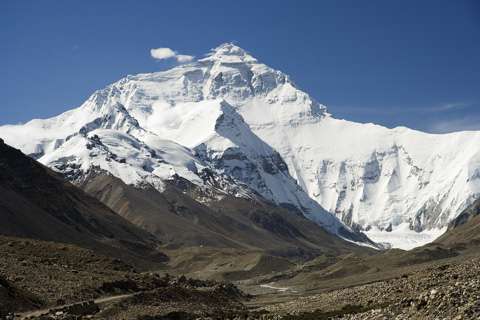Cuisine often serves as a primary motivation for travel, so make sure to indulge in the local dishes.
When dining out, the average daily cost for food in Mount Everest is around $45 (NP₨6055) per person, with previous travelers spending from $45 to $45. Generally, breakfast and lunch cost less than dinner, but this will depend on the type of restaurant and what you order.
Typical meal prices in Mount Everest are as follows:
- Breakfast: $4 to $13
- Lunch: $7 to $18
- Dinner: $13 to $31
- Coffee: $4
- Fast Food or Street Food: $7
Traditional Tibetan cuisine is largely limited to barley, meat (usually mutton or yak), and dairy products. Very few spices and vegetables are used in the cooking, though most dishes are served with a very hot chili sauce on the side. Tibetan restaurants also usually serve westernized food options, and there are an abundance of good Chinese restaurants as well. Tea houses, too, can be found just about everywhere, being a place where many locals come to sit down with friends. While larger towns and cities serve both sweet and salted teas, smaller villages only serve salted. Due to its remote location, the main food available around the mountain is fine dried or instant noodles. Nearby, food is also available at Benba Guesthouse in Tashidzom and the Snowman Hotel in Pasum. It is usually good to be stocked up with your own small supply of food and water.
As far as food and drink go throughout Tibet, some staples include:
Momos: dumplings filled with meat or vegetables, steamed or fried
Tingmo: bland, nearly tasteless steamed bread
Thukpa: a hearty noodle soup with vegetables or meat
Thenthuk: thukpa with handmade noodles
Yak butter tea: salty tea churned with butter, a Tibetan staple and usually an acquired taste for most Westerners
Chang: a Tibetan beer made of barley, light in flavor
Several hotels include breakfast with your stay, while others charge separately for it. The cost and quality can vary significantly depending on the hotel. Knowing this in advance can guide your budget decisions. It could be worth it for the tasty buffet available at the hotel, or you may wish to find a cheaper option at a local bakery or cafe.
Stay hydrated with a water bottle instead of purchasing drinks everywhere. It's also great for the environment.
If you're considering a tour, double-check which meals are included in the package. There may be instances where you'll have to pay for your own meals, potentially stretching your budget.
 Mount Everest
Mount Everest


 Budget Your Trip is all about finding out how much everything costs so that you can travel cheaper and longer. Created by avid travelers Laurie and Bryan, our goal is to help you plan your next trip on the right budget. With average daily travel costs that are calculated from the budgets of real travelers, plus an analysis of hotel and tour prices, you can find out how much money you need to plan your next adventure. We also have plenty of travel advice, accommodation reviews, and activity suggestions.
Budget Your Trip is all about finding out how much everything costs so that you can travel cheaper and longer. Created by avid travelers Laurie and Bryan, our goal is to help you plan your next trip on the right budget. With average daily travel costs that are calculated from the budgets of real travelers, plus an analysis of hotel and tour prices, you can find out how much money you need to plan your next adventure. We also have plenty of travel advice, accommodation reviews, and activity suggestions.